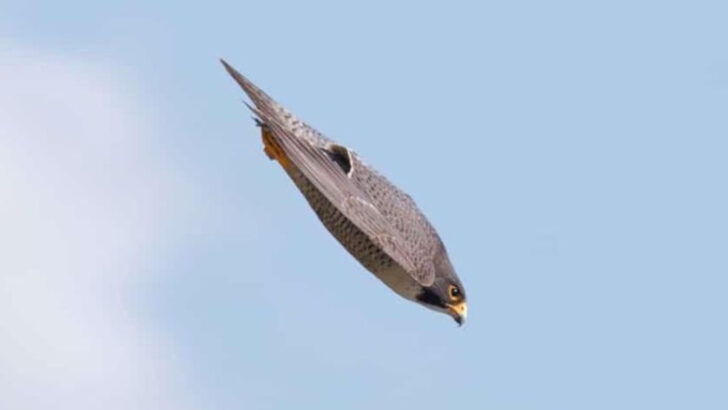This bird doesn’t fly—it dives like a missile.
The Peregrine Falcon holds the title of the fastest animal on Earth, reaching a jaw-dropping 240 miles per hour during a hunting stoop. That’s not just fast—it’s pure, controlled fury from the sky.
But speed is only part of the story. This raptor is a tactical genius, locking onto prey mid-air, twisting through gusts, and striking with surgical precision.
It’s sleek. It’s relentless. And it’s built to kill with breathtaking grace.
Ready to meet the predator that makes even jet pilots jealous? Let’s dive into what makes the Peregrine Falcon the undisputed king of the skies.
Incredible Speed
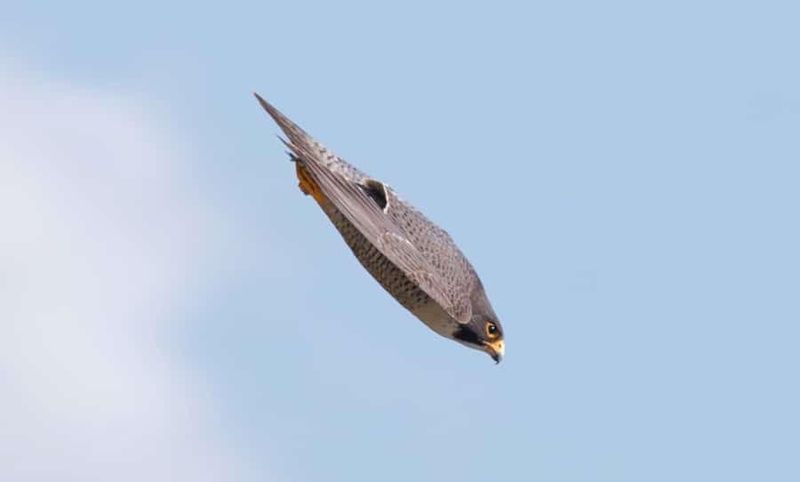
With unparalleled velocity, the Peregrine Falcon is the fastest animal on the planet. Reaching speeds over 240 mph during its hunting stoop, it plummets like a missile towards its unsuspecting prey.
This breathtaking speed is achieved by streamlined body structure and powerful muscles. Its heart, significantly larger compared to body size, pumps vigorously to sustain rapid wing beats. Imagine the rush of wind as it descends, a blur against the sky.
This speed enables the falcon to outpace almost any avian prey, securing its title as nature’s speedster. Who needs a race car when you can fly?
Keen Eyesight
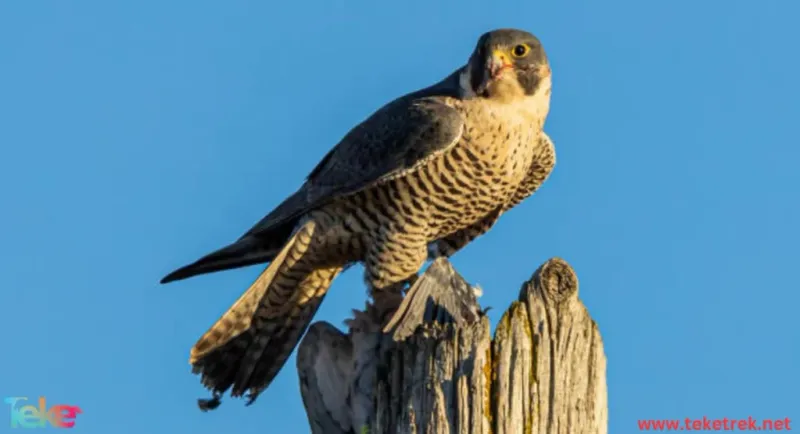
Remarkable visual acuity sets the Peregrine Falcon apart. With eyesight eight times sharper than humans, it can spot prey from over a mile away.
Their large, forward-facing eyes are equipped with a high number of photoreceptor cells. This adaptation allows them to detect subtle movements from great distances. The falcon’s eyes are perfectly adapted for hunting, providing a wide field of view and depth perception.
Imagine having binoculars built into your head! This extraordinary vision ensures that no potential meal escapes its notice. A true marvel of evolution, its eyes are its greatest asset.
Powerful Wings
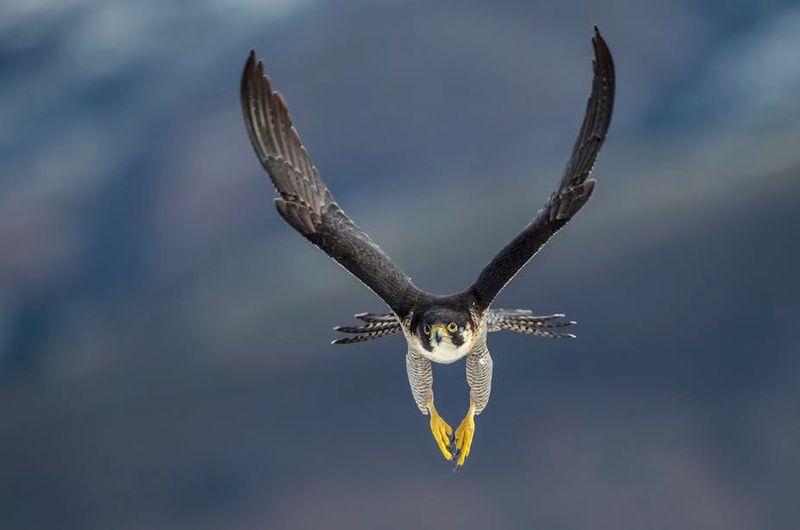
The wings of the Peregrine Falcon are masterpieces of aerodynamic design. Long and pointed, they allow for swift, agile flight and sharp turns mid-air.
These wings can span up to 3.6 feet, enabling quick ascents and descents. Their powerful flapping generates lift and thrust, propelling the bird through the sky with grace. Coupled with a lightweight body, these wings make the falcon an agile hunter.
Imagine the precision of a ballet dancer combined with the power of an athlete. This combination allows the raptor to maneuver effortlessly, adapting to the unpredictable movements of its prey.
Stealth Approach
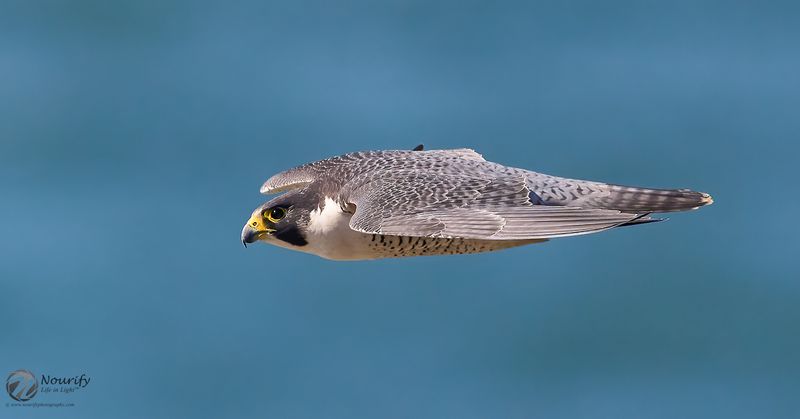
More than just speed and strength, the Peregrine Falcon excels in stealth. Using the cover of sky and terrain, it stealthily approaches its prey.
This calculated approach minimizes detection, catching its target off-guard. With muted feathers and a silent glide, it becomes a specter in the sky. Imagine the surprise of an unaware bird suddenly facing a predator. This strategic advantage enhances its success rate, making it a formidable hunter.
Its ability to remain unseen until the final moment is a testament to its hunting prowess. In the world of predation, stealth often equals success.
Efficient Kill Technique
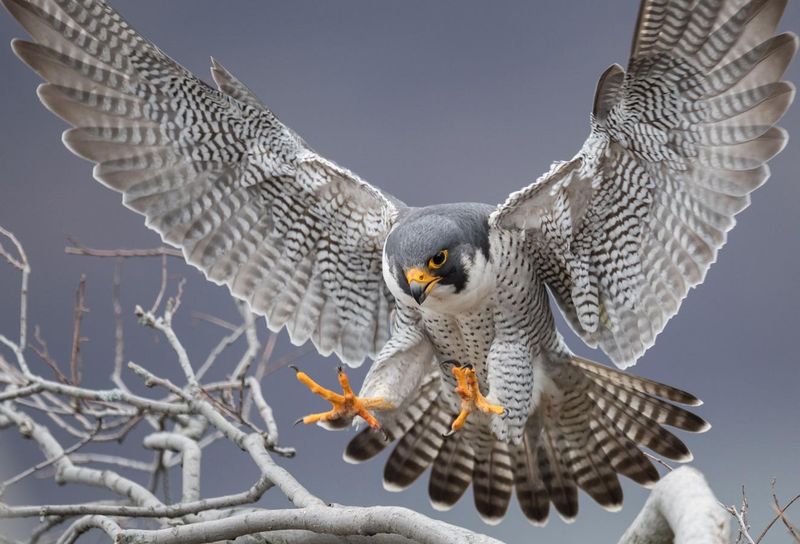
The Peregrine Falcon’s kill technique is both efficient and brutal. With a clenched foot, it delivers a swift, precise strike to its prey’s neck or wings.
This impact either kills instantly or incapacitates, ensuring a successful hunt. The falcon’s talons, sharp and curved, are perfect tools for gripping and dispatching. Imagine the force of a sledgehammer in such a small package.
This method is swift, reducing the chance of escape or struggle. It’s a perfect blend of force and finesse, demonstrating the bird’s mastery of aerial combat. A single strike, and dinner is served.
Adaptability
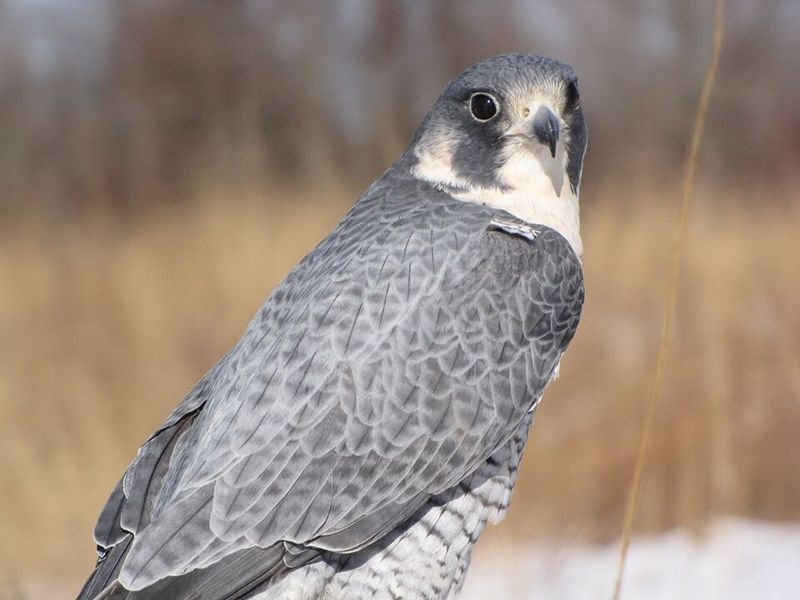
Peregrine Falcons are remarkably adaptable, thriving in diverse environments from cliffs to cities. Urban areas, with their high-rise buildings, mimic natural cliffs, providing suitable nesting sites.
This adaptability has helped the species recover from past population declines. In cities, they find abundant prey such as pigeons, showcasing their opportunistic nature. Imagine a raptor perched atop a skyscraper, surveying its concrete jungle.
This flexibility in habitat choice reflects its resilience and survival instinct. The ability to thrive in various settings highlights its evolutionary success. Adaptability ensures its continued reign as a top predator.
Strong Territorial Instincts
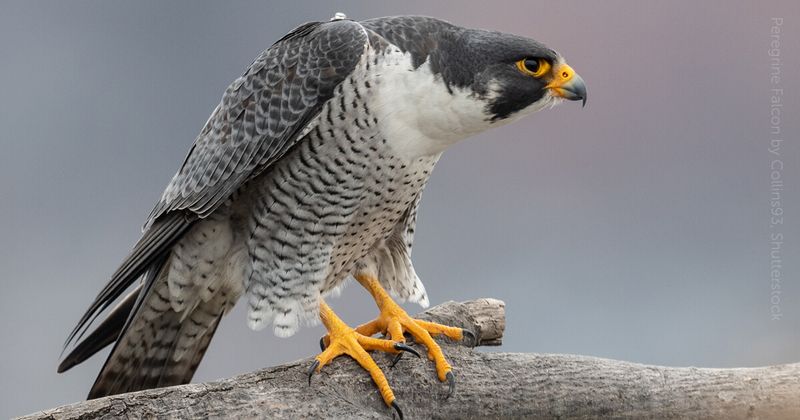
The Peregrine Falcon exhibits strong territorial instincts, defending its domain against intruders. Both males and females participate in this defense, showcasing their commitment to territory.
Engaging in aerial displays and loud calls, they deter potential threats effectively. This territorial behavior ensures access to food resources and suitable nesting sites. Imagine a fierce guardian patrolling its skies, leaving no room for rivals.
Such instincts are crucial for survival, maintaining ecological balance. Their territorial nature is a powerful driving force behind their hunting efficiency, as a controlled area means a steady supply of prey.
Rapid Breeding Cycle
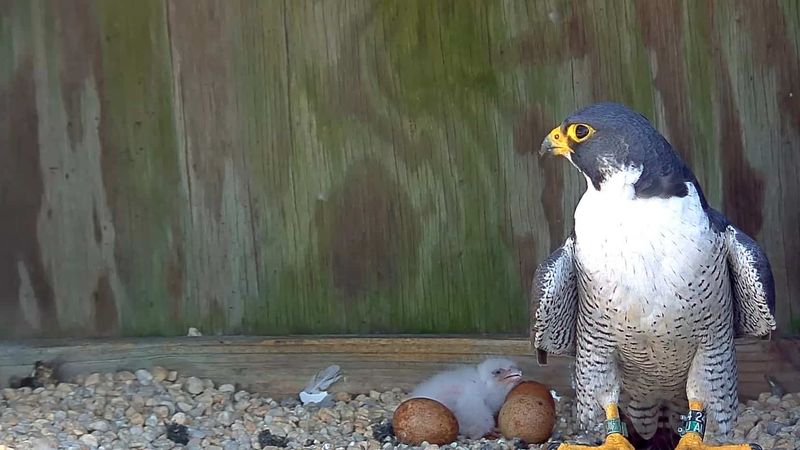
Peregrine Falcons have a rapid breeding cycle, ensuring population stability and growth. They typically lay 3-4 eggs per clutch, with both parents involved in rearing.
The chicks grow quickly, fledging within six weeks of hatching. This swift progression from hatchling to hunter is remarkable. Imagine witnessing the transformation from a fluffy chick to a sleek predator in mere weeks.
Such a rapid cycle allows them to recover from environmental pressures swiftly. It’s a testament to their resilience and adaptability. This breeding efficiency contributes to their widespread presence across the globe.
Unique Hunting Techniques
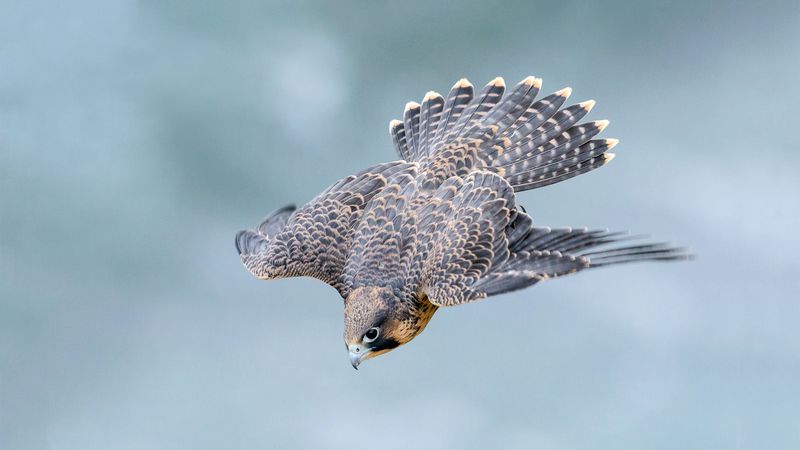
Peregrine Falcons employ unique hunting techniques tailored to their environment. One such method involves using the sun to blind prey, approaching from the direction of the light.
This clever strategy catches prey off guard, increasing hunting success. They also adapt their stoop angle based on wind conditions, optimizing speed and accuracy. Imagine the intelligence required to read environmental cues and adapt on the fly.
Such techniques demonstrate not only physical prowess but also cognitive ability. These strategic adaptations highlight their role as apex predators, employing both brain and brawn in the hunt.
Resilience and Recovery

Once endangered due to pesticide use, the Peregrine Falcon has made a remarkable comeback. Conservation efforts and bans on harmful chemicals have facilitated their recovery.
Their resilience in the face of adversity is inspiring. Breeding programs and urban adaptation have played significant roles in population rebounds. Imagine a species rising from the brink of extinction to soar the skies once more.
This recovery story is a testament to their adaptability and the impact of conservation. The Peregrine Falcon’s journey from endangered to thriving underscores the importance of protecting our natural world.

